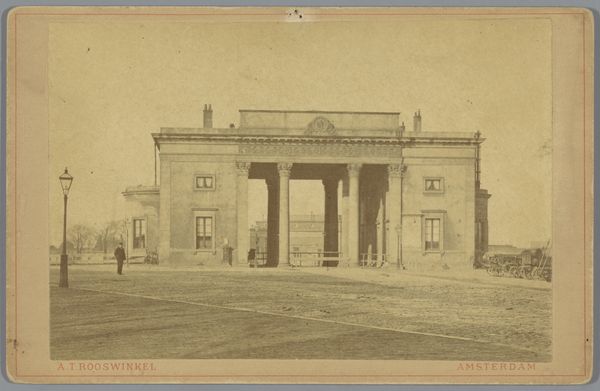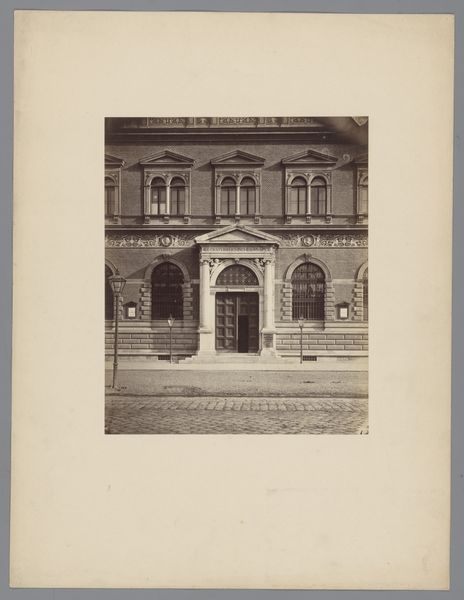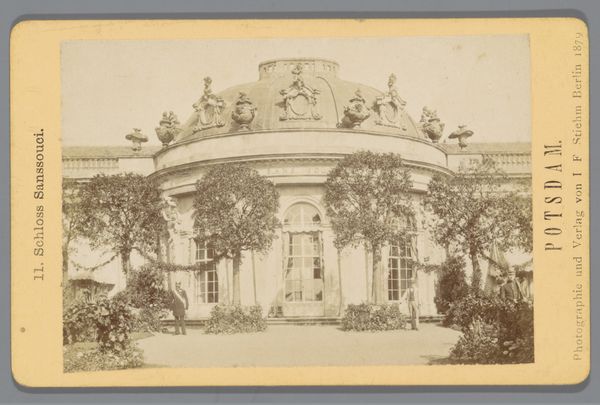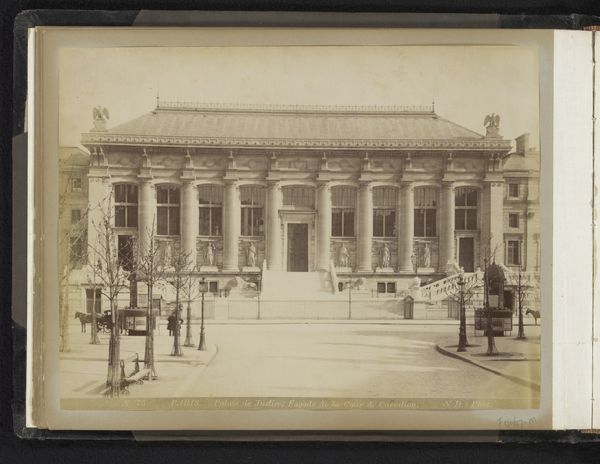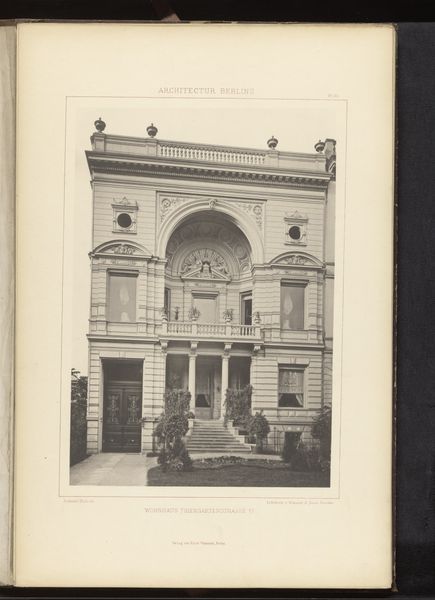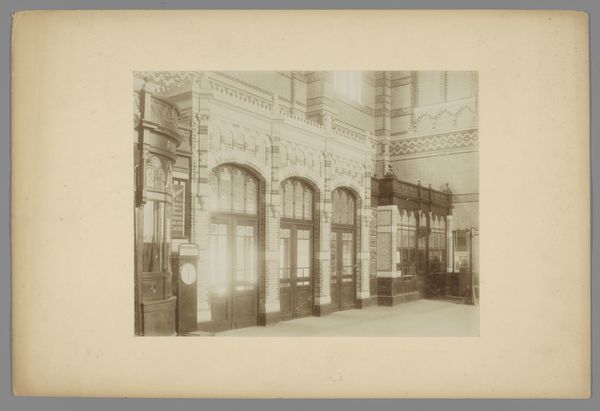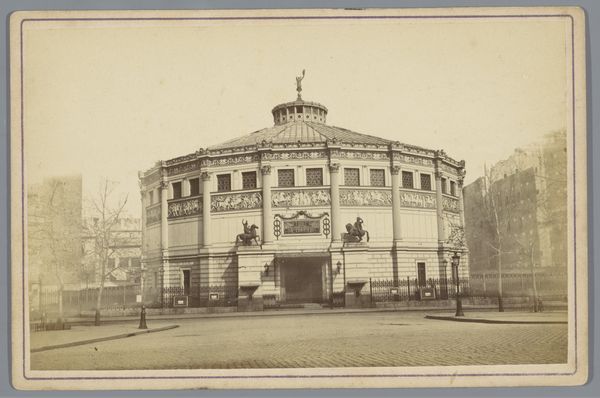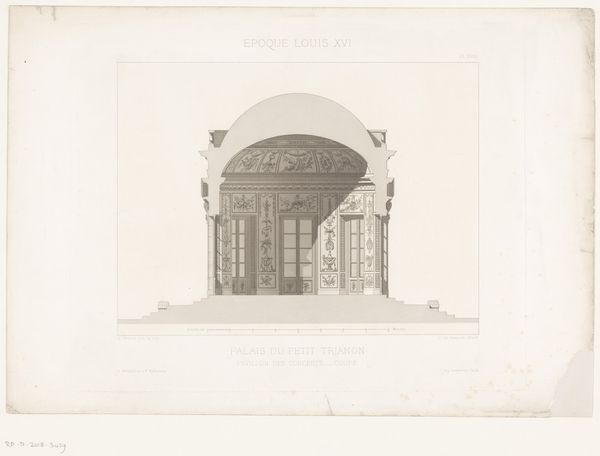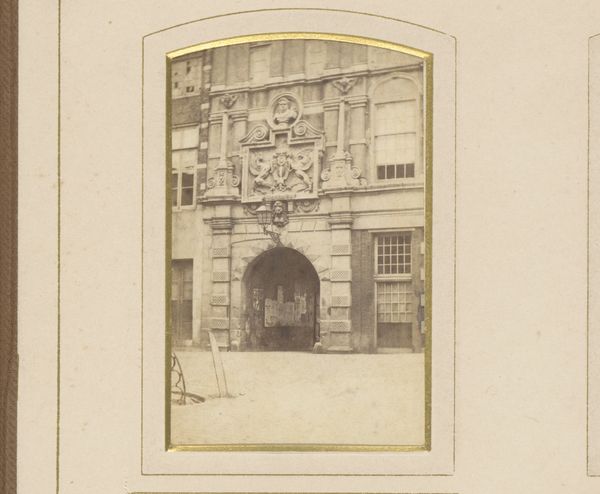
Gezicht op het Franse paviljoen tijdens de Wereldtentoonstelling van 1873 te Wenen c. 1873 - 1875
0:00
0:00
print, photography, architecture
# print
#
photography
#
orientalism
#
architecture
#
building
Dimensions: height 197 mm, width 255 mm
Copyright: Rijks Museum: Open Domain
Editor: This photograph, taken sometime between 1873 and 1875 by the Klösz studio, captures the French Pavilion at the Vienna World Exposition of 1873. I'm immediately struck by the formality and imposing presence of the architecture, yet there's something inherently artificial about the scene. What do you see in this piece in terms of its socio-historical context? Curator: It's crucial to recognize that World Expositions were staged events. They weren't just about showcasing industrial progress; they were deeply embedded in nationalistic and imperialistic agendas. This image, with its formal composition, presents a very curated image of France itself. Consider what the pavilion’s architecture conveys; does it speak to France's self-image at that time? The French, of course, were keen to reassert their power after the Franco-Prussian War. Editor: So the pavilion itself becomes a sort of propaganda, a statement about France’s continued importance on the world stage, and the photographer played a role in that? Curator: Precisely. Photography at these events was far from neutral. Studios like Klösz actively participated in crafting an image that served the interests of the nation being represented. Think about who was meant to see this image, too. Editor: So it's not just a record of a building; it's an active participant in shaping perceptions and solidifying France's role in the international order. That's a pretty interesting use of architectural photography as nation-building. Curator: Exactly. It highlights how imagery, architecture and display, became intertwined with power dynamics. Recognizing that interplay allows us to read such images much more critically. Editor: This completely changes how I look at these old exhibition photos. It’s more than just looking back in time; it’s looking *at* the intentions of the time.
Comments
No comments
Be the first to comment and join the conversation on the ultimate creative platform.
